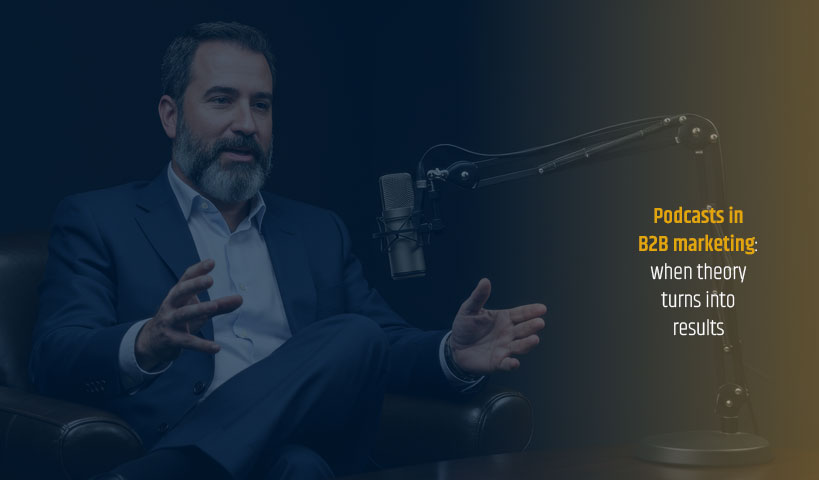
You’ve probably heard a lot about B2B content marketing. You’ve also probably read that it needs to be strategically researched, developed, optimized, shared and promoted. In your small or medium-sized business, you’re probably wondering how.
According to the Content Marketing Institute’s 13th annual study (2023), 71% of B2B content marketers say B2B content marketing is more important than it was last year. And yet, the resources needed to support this growing importance have yet to materialize.

The authors asked an open question: “If you could change one thing about content marketing in your organization, what would it be?
Among the most common responses, specialists within companies say they struggle with four things in particular: management support, a clear and established strategy, a consistent budget and staff to carry out the strategy:
- Management awareness and support
- B2B content marketing strategy
- Larger budget and additional staff
- Better access to subject matter experts
- Better technology
- Better measurement
- Better alignment between marketing and sales
That’s quite a wish list. It’s no wonder that for companies, overall success in content marketing is blocked. Only around 29% of those surveyed consider their company to be extremely or very successful in B2B content marketing.
One thing is clear: it’s time for companies to integrate and support content marketing with the investment – and personnel – it deserves.
That’s probably where you are today, considering whether the investment is worth the candle, especially with limited means. Yet you should be aware that quality content marketing performs better.
It speaks to your customers, guides them through the buying cycle, or customer journey, and acts as a powerful SEO magnet. So, how can you reap the benefits of content marketing with limited resources?
B2B content marketing. Ready?
Let me start by quoting a Gartner study on the power of content in the customer journey.
“Most content consumption occurs in the early stages of customer research, far from the purchase decision.”
Source: Delivering on Marketing’s Promise to Drive Sales, CEB Gartner
This study revealed that the greatest consumption of content in the sales cycle occurred when customers understood and evaluated solutions, even before favoring a supplier (23%). Supplier selection (18.6%) and finalizing the act of purchase (13.4%) are at the bottom of the B2B content marketing consumption scale. Remember my post on intent marketing?
This means that whatever time or money you have to devote to your B2B content marketing, you should use it to strive to inform and educate your potential customers, because that’s how they make the most of it.
That said, let’s look at some frugal ways of doing this.
1- Optimize what you already own
Rather than going through the lengthy process of creating new content, why not start by optimizing what you already have? Your website, product information, blog posts and presentations can always be improved. If you have access to them, make the most of the content you have.
2- Inform and educate
In B2B, whether in communications, heavy industry, agriculture or manufacturing, content that explains your products or services can be important reading. Your customers aren’t just mechanical or engineering experts.
There are experts in finance, logistics, services, executives and management who could also be involved in the purchasing process. Some of your content may simply not be suitable for them.
“Let’s face it, people don’t read anymore! Not true in B2B, where purchasing risks are high.“
Explain things as comprehensively as possible, even if it means simplifying. Contrary to what some may believe, you don’t lose credibility by making things easier to assimilate.
3-Use the customer’s perspective
Are the product descriptions on your website “innovative, feature-rich and exceptional”? Beware, these words may sound empty to your customers! Even if your products are truly innovative, these types of descriptions have little impact on your potential customers (prospects).
Adapt your content to your customer’s perspective. Drop the superlatives, and explain more about customers’ problems and how your product will solve them. This may seem obvious to you, but beware: as you become immersed in your company’s environment, these superlatives may well become second nature. After a while, exaggerated expressions such as “the most innovative” and “we’re the market leader” can really feel almost normal.
To remedy this, try analyzing your customers’ “pain points”. You’ll quickly realize that the words “innovators” and “market leaders” don’t solve the problems your customers know about.
The best thing to do is to read what’s being said about similar products on the Web and social networks. Questions, debates and frustrations are fertile ground for content creation.
4- Use online tools
Optimizing your content with online tools can really help. If you’re working with WordPress (43,2% market share by 2023), you can use plug-ins like Yoast, for example. It optimizes the readability and SEO of your content. There are other good tools like Google’s Keyword Planner.
And then there’s artificial intelligence. Recently, I wrote this with the help of Chat GPT: “B2B marketing is constantly evolving, and AI (Artificial Intelligence) is changing the game. In the age of AI, blogs have a crucial role to play in B2B marketing. Companies can use blogs to educate their target audience. Or to reinforce their positioning and generate qualified leads.
Here are four trends shaping the future of B2B marketing blogs in the age of AI : data-driven content, SEO, automated content production and, finally, chatbots”.
5- Attract the attention of search engines
If you could optimize the content of one or two pages on your site every day, it would help improve your search engine rankings. It’s a long-term job, but one from which you could reap real benefits. Especially in B2B, where most of your competitors are probably not so assiduous.
6- Stand out from your competitors, not from the whole world!
Here’s another point: don’t be too much of a perfectionist. There’s no time for that now. Your content doesn’t have to be the most wonderful or educational in the universe. It just has to be better quality and more interesting to your customers than your competitors’. And do you know what? In B2B, it’s often not that difficult.
It may seem surprising to the uninitiated, but many B2B companies use their website more like a catalog. Their site isn’t set up to convert, since their traditional sales channels are working better than ever.
Check out your competitors’ sites! Look for and exploit what they’ve missed in customer needs. If your competitors are highlighting a skill that you yourself have, then think about how you can stand out.
7-Master your subject and build stories
This may sound too simplistic, but you need to master what you’re talking about. Otherwise, you’ll just keep repeating the same clichés as your competitors. Visuals won’t make up for uninteresting content.
The broader and deeper your knowledge of your industry and its customers, the more you’ll be able to build convincing stories (storytelling) around your subject and thus gain credibility. What’s more, if you’re up to date in your industry knowledge, you’ll be less surprised by new trends when they appear.
Go deeper into your key subjects. The more you read, the more you’ll be able to tell the wheat from the chaff. Visit industry news websites. Read blog posts, eBooks, white papers, case studies and more.
Stay current and form your opinions. Your content needs to go beyond brand or product benefits. You need to establish a solid backdrop of facts, stories and opinions on which your company, products and services look like rock stars! (Click on the image to roll the video).

8- Go further on social networks
If you decide to share content on social networks, avoid sharing the same news as everyone else. A social “post” almost always contains links to other articles or statistics. Investigate and look for stories with less media coverage. This will enable you to publish articles that will set you apart from the competition.
What articles or blog posts could you share that would make you stand out from the crowd? What percentage of your activity on social networks is truly unique? On these, your B2B content marketing should be used to highlight what makes your company unique.
Ok. But where to start?
Where can you start? Your social network accounts, your company website and/or your blog?
What are you waiting for? This will be a marathon, not a sprint, so it’s up to you to choose your starting point. In fact, choose content that attracts the most attention. Build interesting, dynamic stories.
In line with your business objectives, you want to attract customers, you want them to come back and consume your content and then eventually become your customers.
We hope these suggestions have given you some motivation to define these tasks. We’re B2B content marketing specialists! Are you interested? Then contact us.
.




